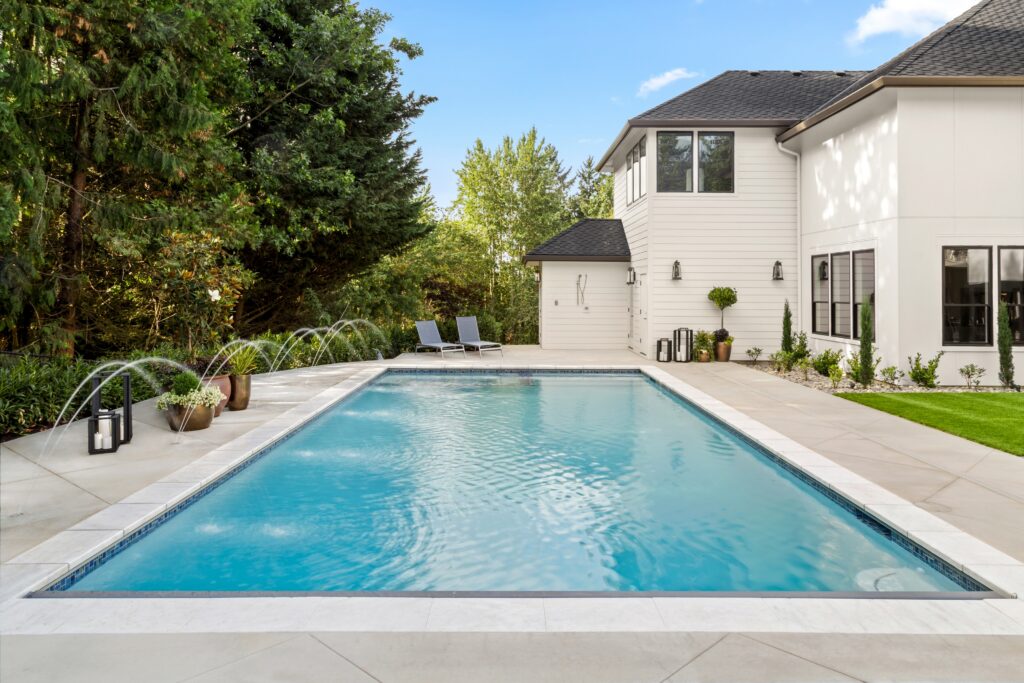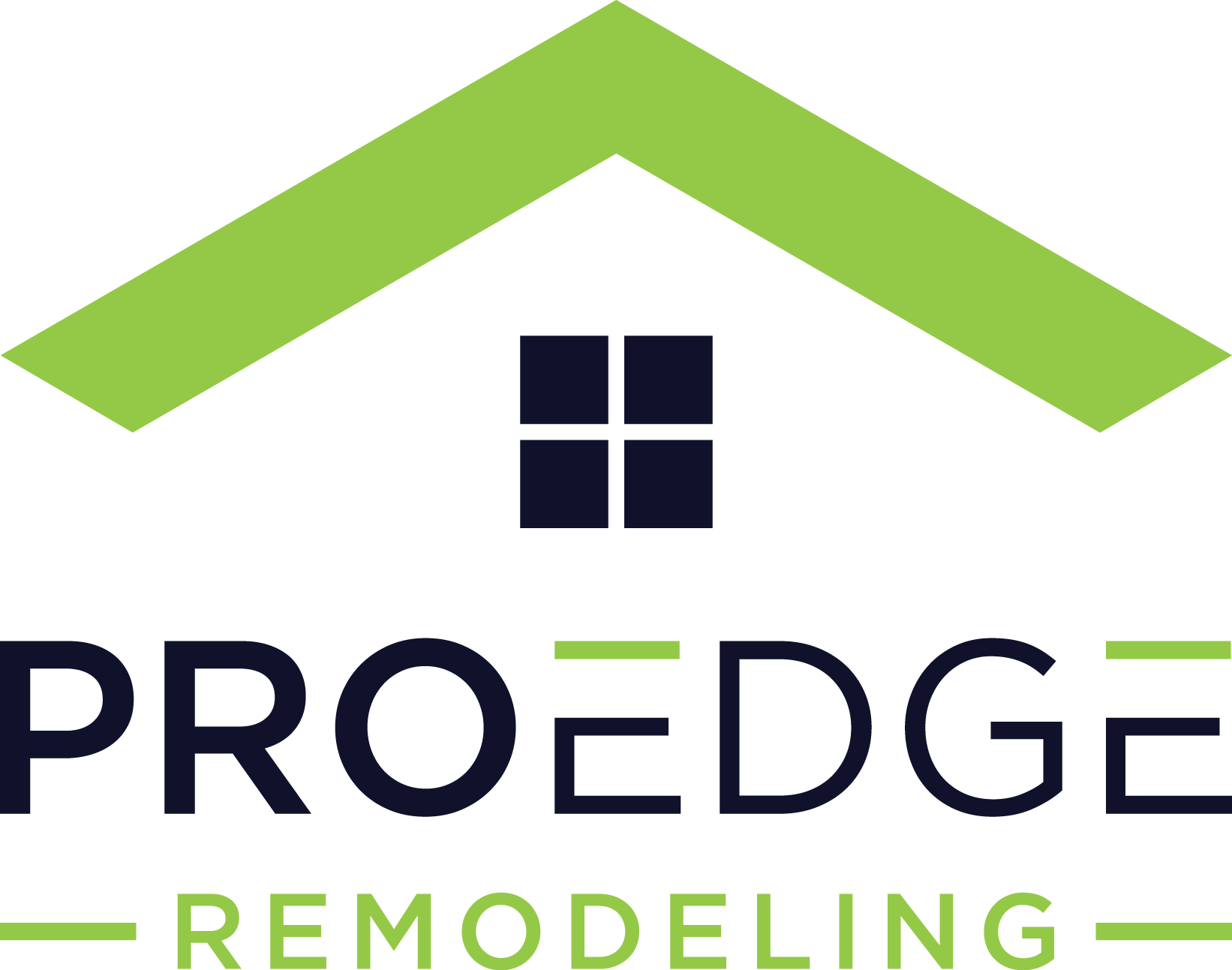In-Ground Pool Cost Guide

In-ground pools have become a dream feature for many homeowners looking to create the ultimate outdoor hangout spot. Whether it’s for cooling off in the summer, hosting friends, or simply upgrading your home’s vibe, a pool can make a big splash in both lifestyle and property value.
But before you fully commit, it’s important to understand what you’re really signing up for—especially when it comes to cost. Installing an in-ground pool isn’t cheap, and the price can vary a lot depending on the size, materials, and extra features you choose.
In this guide, we’ll break down everything you need to know so you can plan your project with confidence—and avoid any surprises along the way.
Table of Contents
Average Cost of In-Ground Pools
So, what does it actually cost to put an in-ground pool in your backyard? On average, most homeowners spend between $35,000 and $65,000 for a standard in-ground pool installation. Of course, that’s just a ballpark—depending on where you live, the size and type of pool you want, and how fancy you get with the extras, prices can climb well above $100,000.
If you’re more of a numbers person, expect to pay around $50 to $125 per square foot for a professionally installed in-ground pool. That means a basic 12×24-foot pool could land somewhere around $25,000 to $40,000, while a larger 20×40-foot pool might push into the $70,000+ range.
Here’s how the cost breaks down by pool type:
- Vinyl Liner Pools
These are usually the most budget-friendly option, with installation costs starting around $30,000 to $55,000. They’re customizable and soft underfoot, but keep in mind the liner may need replacing every 7–10 years. - Fiberglass Pools
Fiberglass pools are pre-molded and can be installed relatively quickly. They’re low maintenance and durable, with costs typically falling between $45,000 and $70,000, depending on the shape and features. - Concrete (Gunite) Pools
These are the most customizable and longest-lasting, but they also come with the highest price tag. Concrete pools usually range from $60,000 to $100,000+, especially if you’re going for a unique shape, luxury features, or high-end finishes.
There’s a wide range of prices out there, but understanding these averages gives you a solid starting point as you plan your pool project.
Cost Factors That Influence Pricing
The price tag on an in-ground pool can vary a lot, and that’s because there are so many moving parts that affect the final cost. There are plenty of details that can either keep things affordable or send the budget soaring.
Here’s a closer look at what really impacts the price:
Pool Size and Shape
A simple rectangular pool is usually cheaper to install than a custom-shaped one with curves, tanning ledges, or built-in benches. And the bigger the pool, the more materials, labor, and time it takes—so naturally, size will have a direct impact on your total cost.
Pool Material and Finish
Whether you choose vinyl, fiberglass, or concrete makes a huge difference in price (and maintenance). But even within those categories, your finish matters too. For example, a basic white plaster finish on a concrete pool will cost less than a high-end pebble or tile finish. And fiberglass pools often come in various colors and textures, which can also affect the price.
Site Preparation and Excavation
Every yard is different. If your backyard is flat and easy to access, great—you’ll save some money. But if your property has rocky soil, tree roots, steep slopes, or limited access for machinery, excavation can get complicated fast. The more prep your site needs, the more it’ll cost to get started.
Landscaping and Hardscaping
Adding a pool is just one part of creating a backyard oasis. Things like patios, decks, retaining walls, walkways, fencing, and even outdoor kitchens can quickly drive up your budget. These elements aren’t always included in the base pool quote, so be sure to factor them in if you’re going for a full backyard transformation.
Permits and Inspections
Most cities and counties require building permits for pool installation, and those permits come with fees. You may also need inspections along the way to ensure everything’s up to code. While this cost is usually minor compared to the rest, it’s an essential piece of the puzzle and varies by location.
All of these factors add up, which is why two pools that look similar on the surface can have wildly different price tags. The more you know going in, the easier it is to plan realistically—and avoid any budget surprises down the line.
In-Ground Pool Types and Their Costs
When it comes to choosing an in-ground pool, the type of pool you go with plays a huge role in how much you’ll spend—not just upfront, but over time. Each type has its pros and cons when it comes to cost, durability, and maintenance.
Here’s a closer look at the three most common in-ground pool types so you can decide which one fits your budget and your lifestyle.
Vinyl Liner Pools
Average installation cost: $30,000 to $55,000
Vinyl liner pools are often the most budget-friendly option out there. They’re built using a flexible vinyl sheet that lines a frame, typically made of steel or polymer panels. These pools are great if you’re looking to get a decent-sized pool without blowing your whole renovation budget.
Maintenance and lifespan:
Vinyl pools are fairly easy to care for, but the liner will need to be replaced every 7–10 years, which costs a few thousand dollars each time. They’re also a little more prone to punctures, so if you’ve got rowdy kids, energetic dogs, or love pool parties with floaties galore, just keep an eye out for sharp objects.
Fiberglass Pools
Average cost range: $45,000 to $70,000
Fiberglass pools come pre-molded and are dropped into your yard in one solid piece. This makes installation super quick—sometimes done in as little as a week. They also come with built-in steps, benches, and other features, which is a nice bonus.
Pros and cons:
On the plus side, fiberglass is smooth to the touch, algae-resistant, and super low maintenance. You won’t need to resurface or replace liners, and many models come with long warranties. On the downside, you’re limited in size and shape because the shell has to be transported to your home—so if you want a super custom look, this might not be the right fit.
Concrete (Gunite) Pools
Highest cost option: $60,000 to $100,000+
Concrete (or gunite) pools are the luxury option—and they come with the price tag to match. These pools are completely customizable in terms of size, depth, shape, and even finish.
Customization benefits:
The big appeal here is flexibility. Concrete pools can be designed to fit any vision, whether you’re working with a tight space or building a show-stopping backyard centerpiece. They’re also incredibly durable and long-lasting, though they do require more maintenance over time—including resurfacing every 10–15 years and more frequent brushing to prevent algae buildup.
Each pool type has its strengths, so the right choice really depends on your budget, timeline, and how much customization you want. Whether you’re keeping it simple or going all-out, knowing what to expect can help you choose a pool that fits your plans.
Optional Features and Upgrades
Once you’ve figured out your pool’s basic shape and structure, it’s time to have a little fun. This is where the optional features and upgrades come in—and while they can add to your overall cost, they also seriously level up your pool experience.
Whether you’re going for backyard resort vibes or just want a few practical add-ons, here’s what to consider:
Pool Heating Systems
If you want to stretch your swim season beyond the peak of summer, a pool heater is a game-changer. There are a few different types—gas heaters, electric heat pumps, and solar heaters—and they all come with different price tags and energy costs. While it’s definitely an extra upfront expense, having warm water in the spring and fall can make your pool way more usable.
Saltwater Systems vs. Chlorine
Both systems keep your water clean and safe, but they work differently. Traditional chlorine pools require regular chemical balancing, which can get tedious. Saltwater systems use a salt cell to generate chlorine automatically, which many people find gentler on the skin and eyes. They cost a bit more upfront but they can reduce maintenance in the long run.
Waterfalls, Lighting, and Automation
If you want to make your pool feel like a high-end resort, this is the section to explore. Waterfalls and bubblers add a fun, relaxing vibe, while LED lighting lets you swim after dark and sets the mood for parties or quiet nights. And if you really want to geek out, automation systems let you control your lights, temperature, and pump settings from your phone. It’s high-tech luxury—and a total crowd-pleaser.
Pool Covers and Fencing
Not the flashiest upgrade, but definitely one of the most important. A safety cover helps keep debris out, reduces evaporation, and keeps pets or kids from accidentally falling in. And depending on where you live, a pool fence may actually be required by law for safety reasons. Fences come in all kinds of styles, so you can find something that keeps your space secure and stylish.
These add-ons can quickly add thousands to your pool budget, but they also enhance your pool’s functionality, safety, and wow factor. Just be sure to prioritize what matters most to you so you stay on budget.
Ongoing Costs to Consider
The upfront cost of building a pool is only part of the story. Once it’s installed, there are ongoing expenses that come with keeping it clean, safe, and running smoothly.
These aren’t deal-breakers by any means—but they’re definitely things you’ll want to factor into your budget before you take the plunge. Here’s what to expect:
Monthly Maintenance and Cleaning
Whether you go the DIY route or hire a pro, regular maintenance is a must. This includes checking chemical levels, skimming debris, vacuuming, brushing walls, and cleaning filters. If you hire a pool service, you’re probably looking at $80 to $150 a month, depending on how often they come and what’s included.
Utilities (Electricity, Water, Heating)
Pools use a surprising amount of power and water—especially if you have a heater, pump, and lighting. Expect your electric bill to jump $30 to $100+ per month, depending on how efficient your equipment is and how often you run it. Heating your pool can be one of the biggest energy expenses, especially if you’re keeping it toasty outside of summer. You’ll also use extra water to top off the pool due to evaporation and splash-out.
Seasonal Care and Repairs
If you live in a colder climate, you’ll need to winterize your pool each year to protect it from freezing temps, then reopen it in the spring. This process involves draining some water, covering the pool, and possibly adding antifreeze to the lines.
You can DIY it or hire a pro—just know it adds a few hundred dollars to your yearly cost. And like anything mechanical, stuff breaks: pumps, filters, lights, and liners don’t last forever, so you’ll want to budget for occasional repairs and replacements.
Insurance Impact
Adding a pool may increase your homeowner’s insurance premium. Why? Because pools are considered an “attractive nuisance,” meaning they come with increased liability risk. You may need to boost your coverage or add an umbrella policy, especially if your insurer requires fencing or alarms. It’s not a huge cost increase, but it’s worth checking with your provider so you’re fully covered.
All in all, owning a pool isn’t crazy expensive on a monthly basis—but it does come with some steady costs you’ll need to plan for. Understanding these ahead of time helps you avoid surprises and enjoy your pool without stressing over the bills.
DIY vs. Professional Installation
Thinking about installing an in-ground pool yourself? It might sound tempting—after all, DIY can save a ton of money on labor, right? But when it comes to something as complex and permanent as a pool, it’s not quite as simple as grabbing a shovel and watching a few YouTube tutorials.
When DIY May Be Possible
Technically, yes—you can install an in-ground pool yourself, especially if you’re super handy, have experience with excavation and plumbing, and are ready to take on a serious project. Some vinyl liner and fiberglass pool kits are available for “self-installation,” and a few brave homeowners go for it.
But here’s the catch: installing a pool isn’t just a big weekend project—it’s a major construction job. You’ll need to dig (often with heavy equipment), level the ground properly, run electrical and plumbing lines, pour concrete or set the shell, pass inspections, and make sure everything is up to local building codes.
While DIY might shave off some upfront costs, it’s usually not worth the risk unless you have professional-level skills and experience—and even then, it’s a massive undertaking.
Benefits of Hiring a Licensed Contractor
Hiring a licensed pool contractor might cost more upfront, but it comes with some major advantages that can save you time, stress, and money in the long run.
First, you get experience and expertise. Pros know how to handle everything from site prep and permits to proper drainage and finishing touches. They’ve seen it all and can anticipate issues you might not even think of until it’s too late.
Second, a licensed contractor will handle inspections and code requirements, which takes a huge load off your plate. If something’s not up to code, you could face delays, extra costs, or even fines—and no one wants that.
Plus, when you work with a pro, you usually get warranties and guarantees on both the workmanship and the equipment. If something goes wrong, you’re covered.
So, unless you’re a seasoned builder or just love taking on high-stakes DIY challenges, hiring a professional is usually the smarter route. Your pool will be safer, built to last, and done a whole lot faster—so you can spend more time swimming and less time stressing.
How to Save on In-Ground Pool Installation
Installing an in-ground pool isn’t cheap. But that doesn’t mean you can’t find smart ways to trim costs without sacrificing the end result. With a little planning and a few strategic choices, you can still get that backyard oasis without totally blowing your budget.
Here’s how:
Off-Season Installation
Timing really is everything. Most people start pool projects in the spring or early summer, which also happens to be the busiest—and most expensive—time for contractors. If you can schedule your installation during the fall or even winter (depending on your climate), you might score better pricing and faster availability.
Bundling Landscaping Services
If you’re planning to redo your backyard or add patios, walkways, or fencing after the pool is installed, try bundling everything with the same contractor. Many pool builders also offer landscaping and hardscaping packages, and combining services can often lead to discounts or lower labor costs. It’s also easier to coordinate timelines when you’re working with one team rather than juggling multiple crews.
Choosing Simpler Designs or Fewer Upgrades
As fun as it is to dream about waterfalls, LED lights, tanning ledges, and swim-up bars, those extras can add up fast. If you’re trying to save, stick with a simple shape like a rectangle and skip the bells and whistles. You can always add features like lighting, automation, or decorative tiles later when your budget allows. Starting simple lets you focus on getting a solid, functional pool installed first.
You don’t have to go all-in right away to enjoy a great pool. Being flexible with timing, bundling services, and starting with a simple design are all smart ways to keep costs down—so you can dive into your new pool without drowning in expenses.
Return on Investment and Home Value
While a pool isn’t always a guaranteed money-maker, it can boost your home’s appeal and marketability, especially in warm climates or neighborhoods where pools are considered the norm.
How Pools Affect Property Value
In general, an in-ground pool can add anywhere from 5% to 8% to your home’s value, depending on location, pool quality, and local buyer demand. In areas like Florida, Arizona, or Southern California—where year-round swimming is a thing—pools are often expected, and not having one could even hurt your home’s appeal. But in cooler regions or neighborhoods where pools aren’t as common, it might not have the same return.
The key here is quality. A well-maintained, professionally installed pool with attractive landscaping and safety features is more likely to be seen as a bonus by buyers. On the flip side, an outdated or neglected pool can come across as a liability.
Resale Considerations and Buyer Preferences
When it’s time to sell, having a pool can be a strong selling point—but only for the right buyer. Families with kids, people who love to entertain, or folks looking to create a resort-style vibe at home will likely see it as a major perk. However, some buyers might view it as added maintenance or a safety concern, especially if they don’t plan on using it much.
If you’re installing a pool primarily as an investment, it’s smart to think about how it will fit with the rest of your property. Will it complement your outdoor space? Is it sized appropriately for the lot? Does it make the backyard feel cramped or crowded? Pools that feel like a natural extension of the home tend to fare better when it comes to resale.
Conclusion
Installing an in-ground pool is a big project—and a big investment—but it can also totally transform your home and how you enjoy your outdoor space. Whether you’re dreaming of weekend pool parties, relaxing float sessions, or giving your backyard that wow factor, knowing what to expect cost-wise helps you plan smarter from the start.
Most in-ground pools fall somewhere between $35,000 and $65,000, but depending on materials, size, upgrades, and location, your final price could be more (or less). And don’t forget about those ongoing costs—maintenance, utilities, repairs, and seasonal care all add up over time.
If you’re serious about investing in a pool, now’s the time to start budgeting. Always get multiple quotes from licensed pool contractors in your area. Comparing estimates helps you understand the going rate, ask better questions, and ultimately choose the right pro for your project.
FAQs
What is the cheapest type of in-ground pool?
Vinyl liner pools are usually the most affordable option, with installation starting around $30,000. They’re budget-friendly and come in customizable shapes, but keep in mind the liner will need to be replaced every 7–10 years.
How long does it take to install an in-ground pool?
It depends on the pool type and the complexity of the project. Fiberglass pools can go in within 1–2 weeks, while concrete pools can take 8–12 weeks or longer due to curing time, custom design work, and finishing touches.
Do I need a permit to install a pool?
You almost always need a permit to build an in-ground pool. The requirements vary by city or county, and your contractor will typically handle the paperwork. Permits help ensure your pool meets local safety and zoning regulations.
Can an in-ground pool increase my home’s value?
It can, especially in warmer climates or neighborhoods where pools are common. A well-designed, well-maintained pool could add 5% to 8% to your home’s value—but it really depends on your location, buyer demand, and the overall condition of your pool.
Additional Home Improvement Resources
- How Much Does It Cost to Electrically Wire a House?
- Guide to Garage Floor Coating
- Pergola with Roof vs Traditional Pergola

Anna has over six years of experience in the home services and journalism industries and serves as the Content Manager at MyHomePros.com, specializing in making complex home improvement topics like HVAC, roofing, and plumbing accessible to all. With a bachelor’s degree in journalism from Auburn University, she excels in crafting localized, comprehensive guides that cater to homeowners’ unique needs. Living on both coasts of the United States has equipped her with a distinctive perspective, fueling her passion for turning any house into a cherished home through informed, personalized decision-making.








